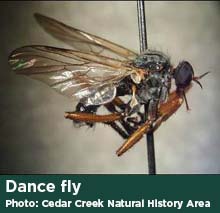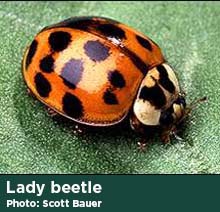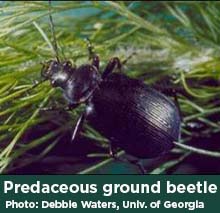Collection: Integrated Pest Management (IPM) Garden plants & Items
Healthy plants will have strong natural defenses against pests & diseases.
The following are the steps to grow healthy plants.
1- Plant the right plant in the right place (Soil type, Sunlight, Climate)
2- Develop healthy soil
3- Choose disease resistant plant species, plants that deter pests (deer, rabbits), plants that act as lure to attract pests away from your preferred species, plants that attract parasitic insects that prey on the pests
4- Carefully inspect all plants for any infestation before buying and planting
5- Diversify plant species and avoid monocultures(single plants species) Diversity will help prevent a pest or disease from quickly moving through a landscape
6- Conservation or improvement of habitat for natural enemies of pests- example: flowers that provide pollen & nectar to beneficial insects
7- Making environment unsuitable for pests- untreated woods chips as a barrier around an area to keep ticks from moving easily from one area to another.
8- Keep the beneficial organisms in your garden, by giving them a habitat for them to over winter in. Do not remove leaves, cut stems down no lower than 1ft or not at all.
Biocontrol https://www.canr.msu.edu/nativeplants/biological_control/
Biological control is the use of predators, parasites, or pathogens to suppress a pest population and decrease the damage it causes. Conserving beneficial predators and parasites around the farm or garden has been recommended to help suppress pests and increase crop yields. Native plants may play a role in helping to enhance the abundance and performance of these helpful arthropods.
Many beneficial predators and parasites (also known as natural enemies) rely on plant nectar and pollen to help sustain them. In addition to these food sources, plants can also provide needed alternative prey and shelter from adverse environmental conditions. For example, one important parasite of the European corn borer in Michigan is the braconid wasp Eriborus terebrans. It will live for over 14 days in corn fields if provided with a nectar substitute, but only 2 days with no sugar. These food resources are typically not present in Michigan corn fields so that wasps needed to travel to field edges to find them. Native perennial plants can provide natural enemies, such as E. terebrans, with the resources they need to live longer, reproduce, and better control pest insect populations.
- Beneficial natural enemies



Why recognize natural enemies and spiders?
Plants in this collection are known to either repel unwanted insects deer and rabbits or attract predatory insects that prey on the pest insects.
The ones that help repel biting insects can be planted in planters and placed around your deck or patio. Also consider the Bye Bye Mosquito bucket
All plants are grown with ecological methods, soil, seeds & plants that are harvested(on private property (Middlesex county, MA) or purchased from sources using ecological or organic practices in the USA, plants grown by us follow ecological and organic practices (NOFA standards). I hope to have NOFA Accreditation by April 2025 Eco friendly woman owned and operated business.
I strive to minimize waste production, by recycling & reusing waste, reducing the use of non natural items (plastic pots) in the growing process.
-
Scarlet bee balm- Monarda didyma
Regular price From $10.50 USDRegular priceUnit price / per -
Chives (Allium schoenoprasum)
Regular price From $5.00 USDRegular priceUnit price / per -
Gray Goldenrod (Solidago nemoralis)
Regular price From $6.25 USDRegular priceUnit price / per$12.50 USDSale price From $6.25 USDSale -
Canada Goldenrod - (Solidago canadensis)
Regular price $4.25 USDRegular priceUnit price / per$8.50 USDSale price $4.25 USDSale -
Zig-zag Goldenrod (Solidago flexicaulis)
Regular price $5.00 USDRegular priceUnit price / per$8.50 USDSale price $5.00 USDSale -
Blue Stem Goldenrod (Solidago caesia)
Regular price $22.00 USDRegular priceUnit price / per -
Common Yarrow - Achillea millefolium
Regular price From $5.25 USDRegular priceUnit price / per$10.50 USDSale price From $5.25 USDSale -
Holy Basil/Tulsi Kapoor (Ocimum tenuiflorum)
Regular price From $7.50 USDRegular priceUnit price / per -
Sweet Everlasting - Pseudognaphalium obtusifolium
Regular price From $8.50 USDRegular priceUnit price / per -
Partridge Pea - Chamaecrista fasciculata
Regular price From $8.50 USDRegular priceUnit price / per -
Virginia Mountain Mint - Pycnanthemum virginianum
Regular price From $12.50 USDRegular priceUnit price / per -
Mojito Mint
Regular price $5.00 USDRegular priceUnit price / per -
Ox Eye Sunflower - Heliopsis helianthoides
Regular price From $12.00 USDRegular priceUnit price / per -
Rosemary officinalis
Regular price $5.00 USDRegular priceUnit price / per -
Alpaca/Llama Fiber( Gardeners wool) Available after Spring Shearing
Regular price From $5.00 USDRegular priceUnit price / per -
Bye Bye Mosquito Bucket Kit
Regular price $29.99 USDRegular priceUnit price / per












